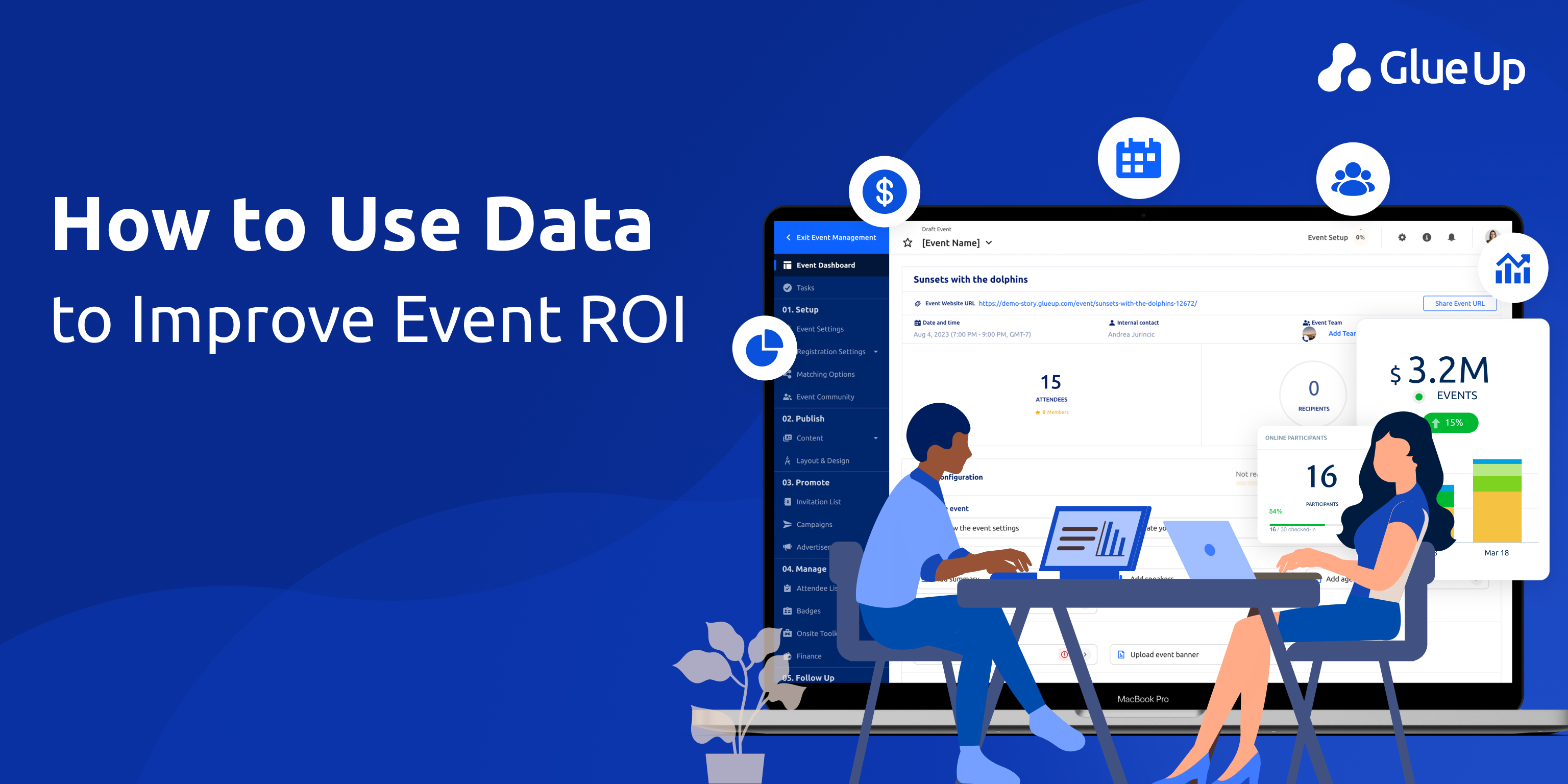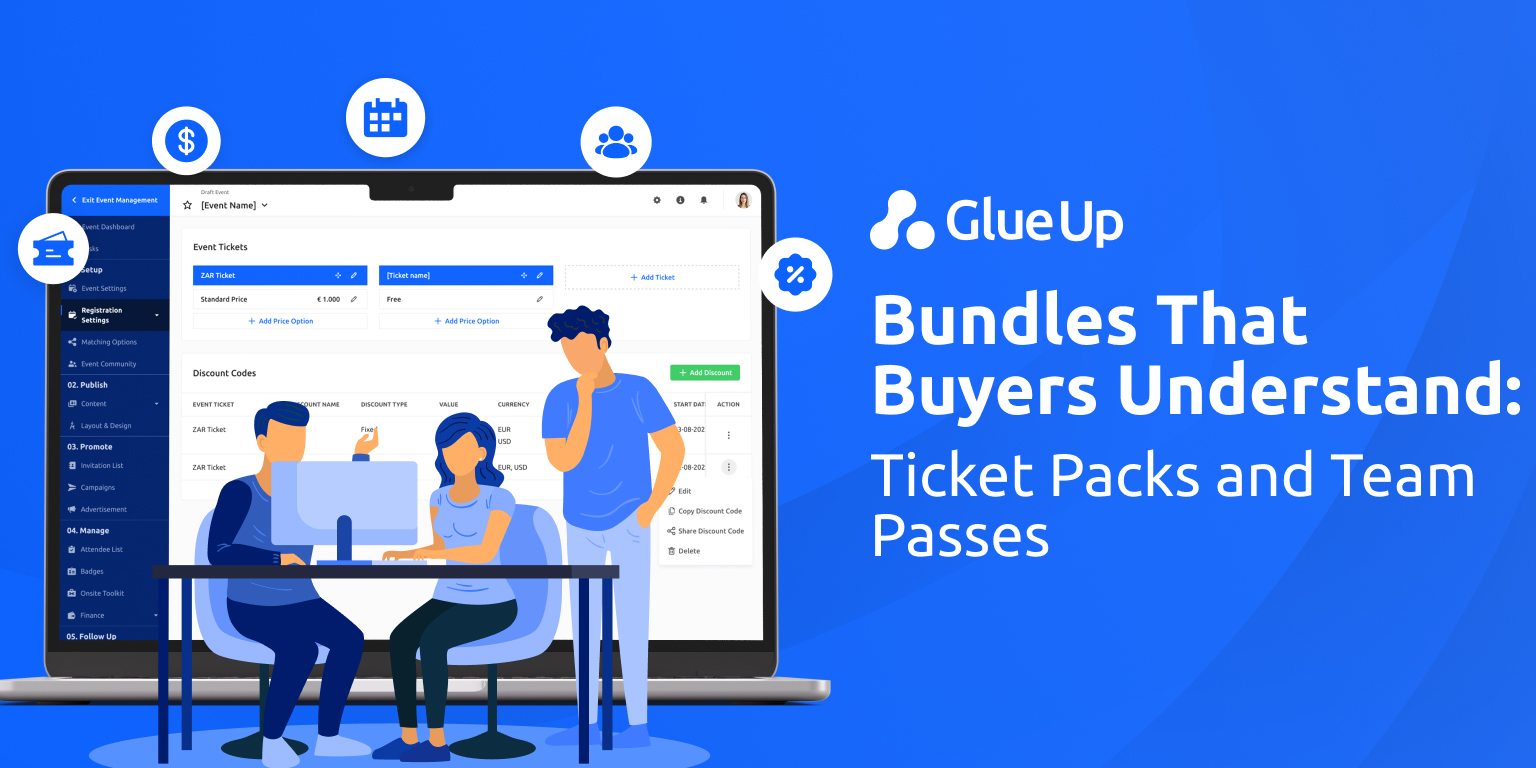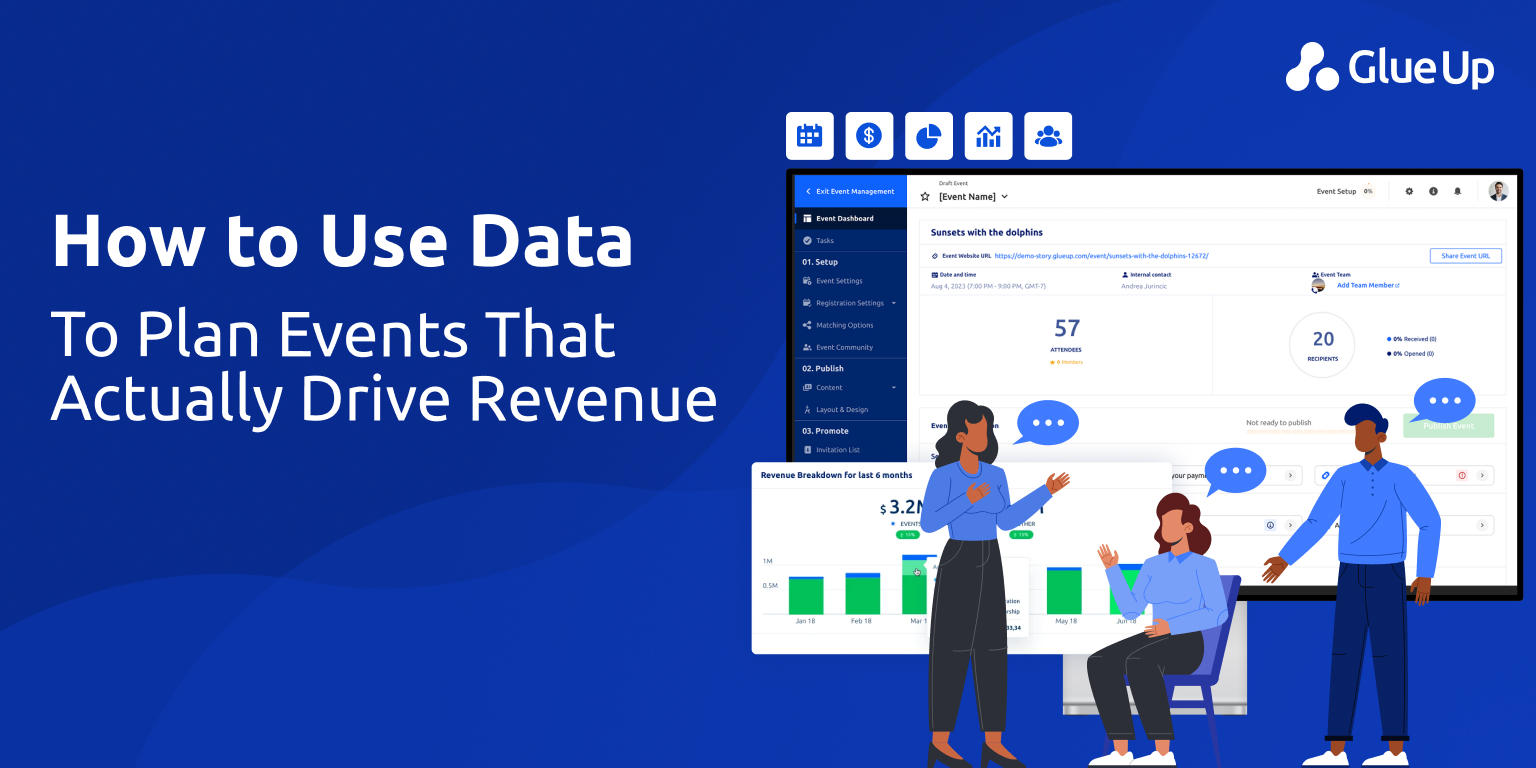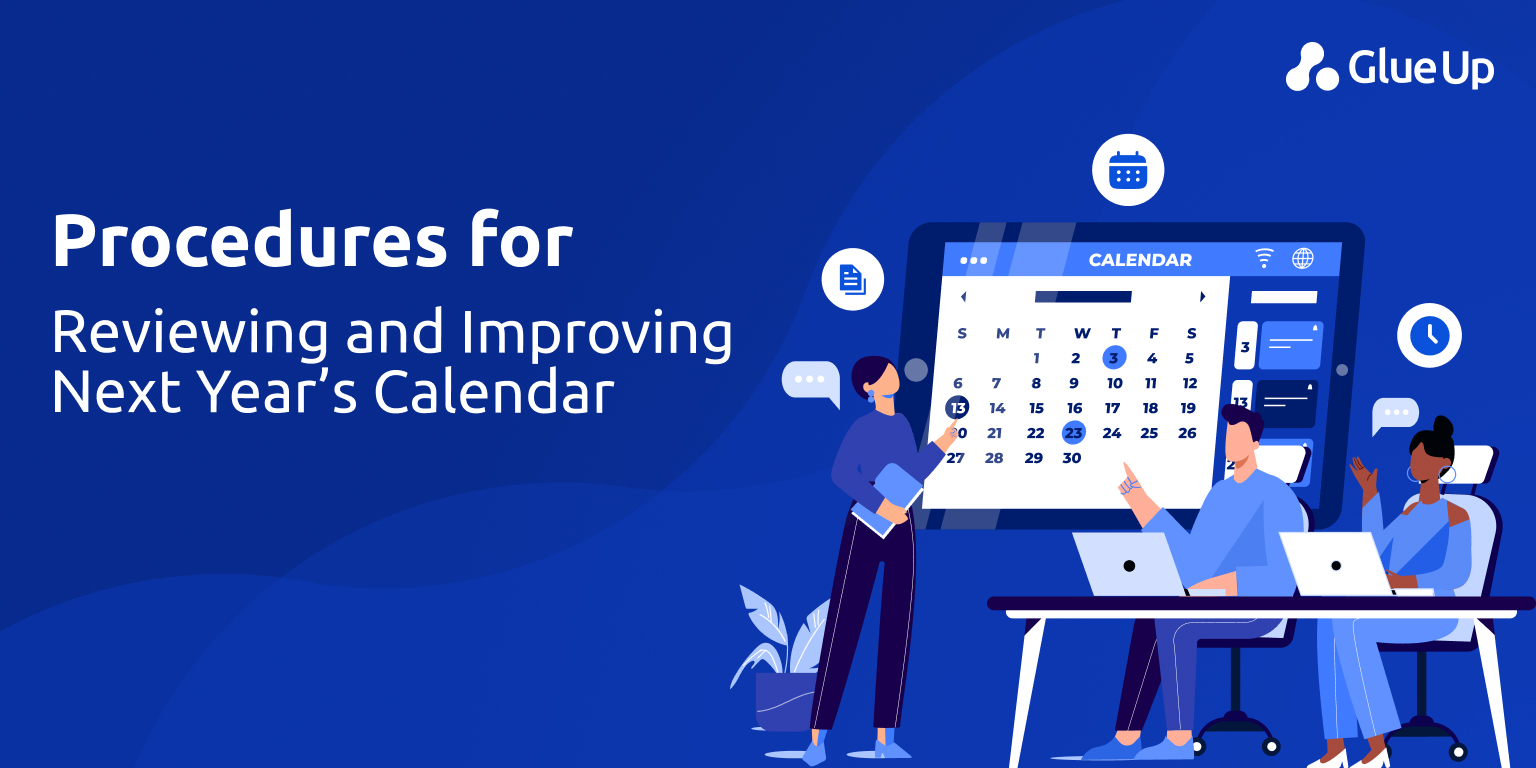
At every major event, there’s that familiar moment of silence. The boardroom lights dim, the post-event report lands on the table, and someone clears their throat. “So,” they ask. “What did we actually get from that?”
No one ever asks about badge scans. They ask about value. And that’s where event data either makes you shine or exposes how little you really know about your impact.
For years, associations and chambers of commerce have measured success by attendance and applause. But applause doesn’t renew memberships. It doesn’t convince sponsors to invest again. It doesn’t tell your CFO whether next year’s conference deserves a bigger budget.
What does? Evidence. And that evidence lives inside your event data.
Key Takeaways
Most associations collect numbers but fail to connect them to outcomes. Event data turns scans, meetings, and dwell time into a financial and strategic story, linking every engagement to renewals, sponsorships, and long-term ROI.
To win credibility with your board, structure your event data around Money (financial outcomes), Members (retention and upgrades), and Market (influence and trust). These ledgers translate technical metrics into leadership language.
The secret to good analytics is cleaner connections. Consistent IDs, integrated CRM and finance data, and clear documentation of assumptions make your event data reliable, explainable, and board-ready.
Don’t chase perfect data, test it. Experiments like pre-scheduled meetings, session tagging, or 48-hour follow-ups generate actionable benchmarks that directly boost ROI and member engagement.
Data doesn’t persuade, stories do. When you narrate event data through renewal uplift, pipeline created, and sponsor ROI, you shift perception: your events stop being expenses and start becoming investment engines.
Quick Reads
The Real Reason Most Organizations Misuse Event Data
The typical event report looks impressive: graphs, charts, vanity numbers. But when board members lean in, there’s usually no bridge between what happened and what it achieved.
Thousands of check-ins but no clue if any of them renewed membership. Tens of thousands in sponsorships sold, but no follow-up data proving pipeline impact. Smiling faces, glowing testimonials, and yet, declining retention rates.
The problem isn’t lack of data. It’s lack of translation.
Raw event data on its own is noise. Scans, clicks, dwell time, registrations, all disconnected unless you can trace how those behaviors led to measurable business outcomes. Event teams collect data; leadership teams crave meaning. Somewhere in between, the story gets lost.
The fix begins when you stop treating data as inventory and start treating it as narrative.
The Three-Ledger Model: Translating Event Data into Decisions
Most boards think in three categories: money, members, and market. If your event data strategy feeds all three, you’ll stop defending your events and start defining strategy.
1. The Money Ledger: What’s the Financial Story?
Every event has a P&L. But the best ones also have a profit of attention.
The money ledger tells you the hard outcomes:
Revenue from tickets, workshops, sponsorships, and exhibitor fees
Costs across logistics, production, marketing, and staff time
Net contribution: your event’s real profit
Pipeline created or influenced
Deals closed within 90–180 days after the event
That last one is the one most association ignore. It’s what it set in motion.
A simple formula works: Event ROI % = [(Net Contribution + Attributable Revenue) ÷ Total Cost] × 100
When you start using event data to track influenced pipeline, the conversation with your board changes from “Did we break even?” to “How much future revenue did this create?”
2. The Members Ledger: Did It Strengthen Belonging?
For member-based organizations, this is the true heartbeat.
Events are supposed to renew enthusiasm, deepen connections, and remind members why they joined. But without the data, you’re guessing.
Here’s how to know:
Track renewal rates among event attendees vs. those who didn’t attend.
Measure upgrades, cross-program sign-ups, or volunteer participation post-event.
Use event data from session engagement or dwell time to spot highly involved members, these are your future advocates.
If your renewal rate among attendees is 82 % and non-attendees is 72 %, you’ve got proof: the event improves retention by 10 points. That’s your talking point at the next board meeting, and your justification for next year’s budget.
3. The Market Ledger: Did You Expand Influence?
Events are rarely just about revenue or renewals. They’re about relevance, the currency every association lives or dies by.
The market ledger captures intangibles:
Sponsor satisfaction and likelihood to renew
Press coverage or media mentions
Social reach and engagement
Attendee sentiment (NPS, trust, optimism)
These may sound “soft,” but they quantify something vital: trust. PCMA’s Return on Events (ROE) framework argues that relationship capital and knowledge exchange are measurable assets. When your event data captures these, you’re measuring future goodwill.
Building the Event Data Plumbing
Before you can analyze, you have to connect.
And here’s where most organizations fail: data lives in silos. Registration software, CRM, finance, marketing automation, each speaks its own language.
You don’t need a million-dollar data warehouse to fix this. You need consistent IDs, clean joins, and collaboration between teams.
Create a unified ID system. Every attendee, member, and sponsor must have a persistent ID across registration, the mobile app, the event platform, and the CRM.
Build an event data schema. Define a simple table:
attendee_id, membership_status, renewal_date
reg_date, sessions_attended, dwell_minutes
sponsor_interactions, meetings_held
followups_within_48h, opportunities_created, pipeline_value, closed_won_value
Join it with finance data. Link event_id to GL cost centers, ticket SKUs, and sponsorship invoices.
That’s how you calculate gross margin per event type.Document assumptions. Always annotate: how did you attribute revenue? what’s the time window? what’s missing?
Respect privacy. Aggregate before reporting. Use “engaged attendees” as thresholds (e.g., ≥ 2 scans or ≥ 30 minutes of dwell). People respect transparency.
Iterate. Your first join will be messy. Don’t aim for perfection; aim for progress. The act of cleaning data together already forces alignment between teams.
Glue Up’s platform already bridges much of this. The event management, CRM, and finance modules share one ecosystem, giving associations an integrated foundation for meaningful event data collection.
Making Event Data Work: KPIs That Actually Matter
Once your plumbing flows, metrics become storytelling tools. Here’s your KPI palette:
| KPI | Formula | Why It Matters |
|---|---|---|
| Event ROI % | (Net Contribution + Attributable Uplift) ÷ Total Cost × 100 | Core financial lens |
| Renewal Uplift % | Renewal(attendees) − Renewal(non-attendees) | Member loyalty impact |
| Meeting Conversion % | Meetings ÷ Scans | Lead quality indicator |
| Pipeline per Sponsor | Attributed Pipeline ÷ Sponsors | Sponsor ROI benchmark |
| Seat Fill % | Seats Occupied ÷ Capacity | Programming effectiveness |
| Cost per Engaged Attendee | Total Cost ÷ Engaged Attendees | Efficiency measure |
But remember: metrics are meaningless unless you narrate them. When you present data, start with: “Because we did X, we achieved Y, which means Z for our strategy.”
That framing connects numbers to outcomes, and that’s what leadership retains.
Attribution Models Without the Jargon
Boards hate when you sound like a data scientist. Keep attribution simple and visual.
Last Touch: credit the final engagement (useful when events close deals).
First Touch: credit the origin (useful when events generate leads).
W-Shaped: credit first, opportunity creation, and last (balanced).
Multi-Touch with Decay: advanced, weights each interaction by recency.
Start with one model and stay consistent. You can always mature later. Even saying, “We use a W-shaped attribution model to fairly credit pre-event marketing and post-event meetings” makes you sound measured and credible.
Five Experiments That Turn Data into Proof
To move from theory to traction, try small, controlled experiments. Each one builds internal belief.
1. Meeting-Maker Pilot
Pre-schedule two meetings for your top 50 accounts before the event. Compare opportunity creation vs. the group that books ad hoc. You’ll see why structure beats serendipity.
2. Session Tagging by Renewal Risk
Tag sessions as “retain,” “upgrade,” or “advocacy.” After the event, check if attendance at these sessions correlates with renewal or upgrade rates.
3. Follow-Up Velocity
Track how many hot leads receive follow-up within 48 hours. Measure close rates vs. slower responses. The difference is usually dramatic.
4. Early-Bird Narrative A/B
Test emotional triggers:
Email A: “Learn new skills that pay off in 30 days.”
Email B: “Meet decision makers who change your career.”
Your event data will show which story converts better logic or aspiration.
5. Mid-Event Pulse Checks
During the conference, ask one emotional question: “How confident do you feel about your work after today’s sessions?” Emotional metrics like these correlates strongly with post-event engagement and sponsor recall.
Each experiment makes your event data richer, turning numbers into human signals.
Sponsors Don’t Want Foot Traffic, They Want ROI
Ask any exhibitor what they want, and they won’t say “scans.” They’ll say, “meetings that lead somewhere.” Event data lets you quantify that value.
Imagine reporting to a sponsor: “You scanned 3,400 badges. 400 were your target personas. 60 meetings held, 12 opportunities opened, 3 deals closed within 90 days, totaling $40K in pipeline. ROI = 160 %. Renewal expected.”
That’s business intelligence. And when you can show it, sponsors will compete for your booths.
Associations using Glue Up’s integrated sponsorship and event modules can already produce these reports in minutes, giving partners the same data transparency they demand from commercial trade shows.
The One-Page Board Report They’ll Actually Read
No one in leadership reads 30-slide decks. They read clarity.
Create a one-page “five-box” report:
Financials — revenue, cost, net contribution, ROI %.
Pipeline — opps created, influenced, and closed (T+90).
Membership — renewal uplift, upgrades.
Sponsorship — meetings held, pipeline per sponsor, renewal likelihood.
Experience — NPS, satisfaction, dwell time, late registration curve.
Add a two-sentence story up top: “This year’s event generated $1.2M in revenue, improved renewal rates by 8 points, and delivered $300K in new pipeline. Sponsors saw 2× ROI. Next year, we scale meeting-maker and shorten follow-ups.”
That’s how you make data readable, memorable, and actionable.
Turning Data into Storytelling
Facts don’t inspire; context does. Here’s how to make your event data persuasive:
Start with the question the board cares about.
Use contrast — “last year vs. this year,” “before vs. after adopting data.”
Reveal one surprise — people remember anomalies.
Add emotion — “We learned optimism correlates with engagement.”
End each slide or section with: “So what does this mean for us?”
When you tell stories with tension and payoff, even non-data people start to care.
Common Pitfalls and How to Avoid Them
Even the best teams stumble. Watch for these:
Badge scans = success → Replace with engagement quality metrics.
No control group → You can’t prove impact without comparing.
Attribution fog → Always name your model and timeframe.
Too many charts, no story → Replace quantity with clarity.
Ignoring ROE (emotional outcomes) → Attendee sentiment predicts retention.
Data hoarding → Share summaries widely; culture change starts with visibility.
Follow-up failure → Automate reminders; enforce accountability.
Every pitfall avoided is an extra year of board confidence earned.
The Human Side of Data
It’s tempting to talk about event data as something cold: numbers, dashboards, pipelines. But behind every metric is behavior, and behind every behavior is emotion.
When an attendee checks in early, stays longer in a session, or books a meeting, they’re signaling curiosity and belonging. When a sponsor returns, it’s because your event made their investment feel worthwhile.
Data is the closest thing you’ll ever get to empathy at scale. Use it to understand what your audience values.
From Measurement to Mastery
Most organizations stop at measurement, tracking what happened. The smart ones move to mastery, predicting what’s next. Once your event data flows across systems, patterns emerge:
Which sessions attract renewals?
Which sponsor types yield higher long-term retention?
How much dwell time predicts conversion?
Glue Up’s analytics and AI Copilot already surface insights like these, automatically identifying trends, correlations, and outliers so teams can make proactive decisions.
That’s where maturity lives when your data shapes the future.
Activate Event Data or Stay Guessing
If your events are still justified by hope and history, your next budget line will be the first to shrink.
But when you can stand before your board and say: “Here’s our event ROI, here’s our renewal uplift, here’s the pipeline we opened, and here’s why our sponsors increased spend,” you’ve crossed from marketing expense to revenue engine.
That’s what event data does. It turns every check-in into insight, every meeting into measurable value, and every event into a business case for the future.
You don’t need perfect data. You need connected data, and a platform that makes it usable. That’s what Glue Up was built for: bringing your registration, membership, finance, and events together so that meaning isn’t trapped in silos.
So, the next time someone asks, “What did we get from that event?” You won’t pause. You’ll smile. Because the data already told you the answer.



